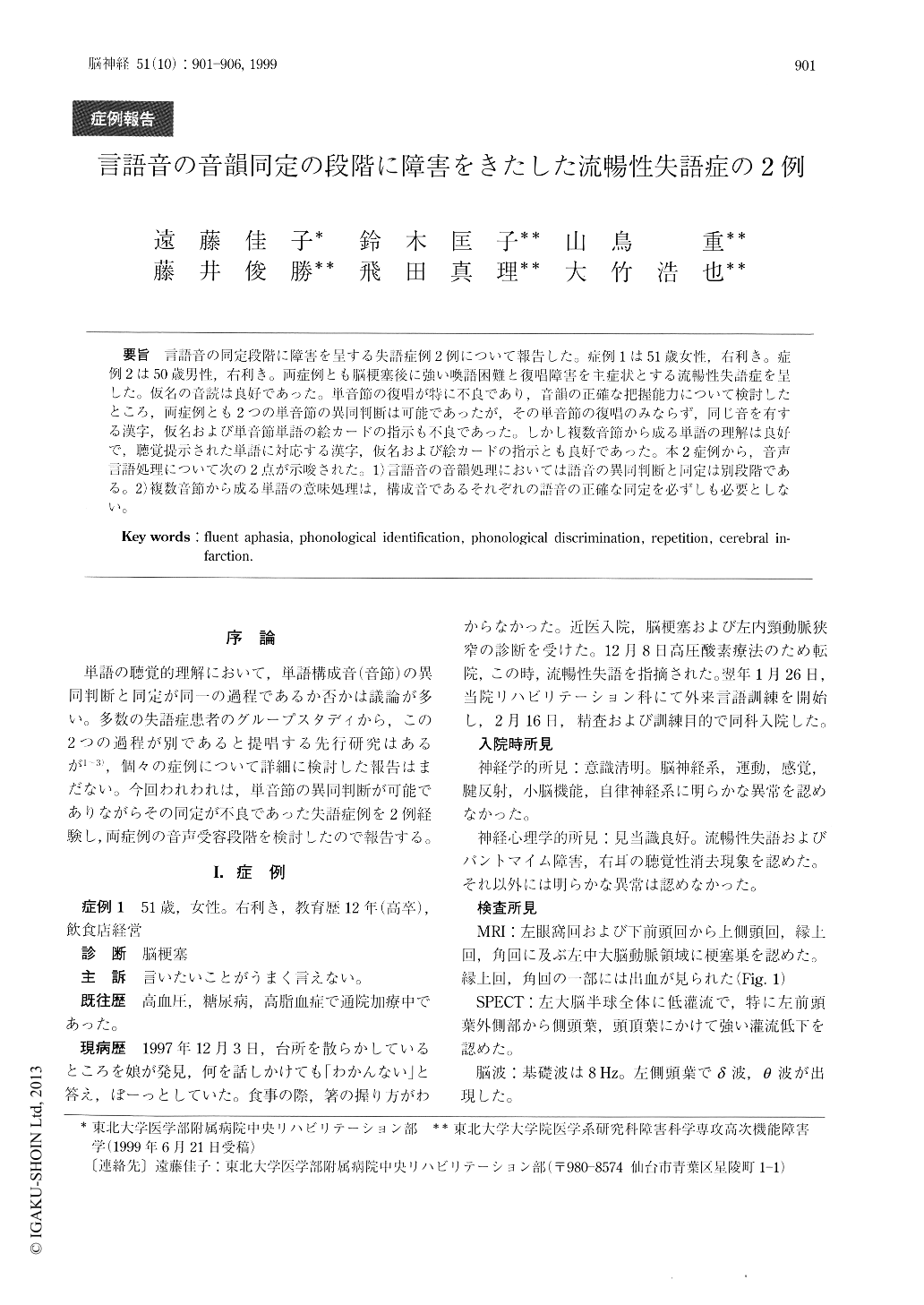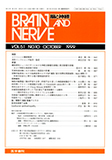Japanese
English
- 有料閲覧
- Abstract 文献概要
- 1ページ目 Look Inside
言語音の同定段階に障害を呈する失語症例2例について報告した。症例1は51歳女性,右利き。症例2は50歳男性,右利き。両症例とも脳梗塞後に強い喚語困難と復唱障害を主症状とする流暢性失語症を呈した。仮名の音読は良好であった。単音節の復唱が特に不良であり,音韻の正確な把握能力について検討したところ,両症例とも2つの単音節の異同判断は可能であったが,その単音節の復唱のみならず,同じ音を有する漢字,仮名および単音節単語の絵カードの指示も不良であった。しかし複数音節から成る単語の理解は良好で,聴覚提示された単語に対応する漢字,仮名および絵カードの指示とも良好であった。本2症例から,音声言語処理について次の2点が示唆された。1)言語音の音韻処理においては語音の異同判断と同定は別段階である。2)複数音節から成る単語の意味処理は,構成音であるそれぞれの語音の正確な同定を必ずしも必要としない。
We report two aphasic patients who could discrimi-nate Japanese syllables but could not identify them.
Case 1 was a 51-year-old right handed woman with 12-year education. Case 2 was a 50-year-old right handed man with 9-year education. They developed fluent aphasia after a cerebral infarction. Brain MRI of case 1 revealed widely distributed lesions including in-ferior frontal, superior temporal, angular and supra-marginal gyri. Lesions revealed by Brain CT in case 2 included the left superior and middle temporal, angu-lar and supramarginal gyri. Both showed severe im-pairment of repetition and confrontation naming.

Copyright © 1999, Igaku-Shoin Ltd. All rights reserved.


